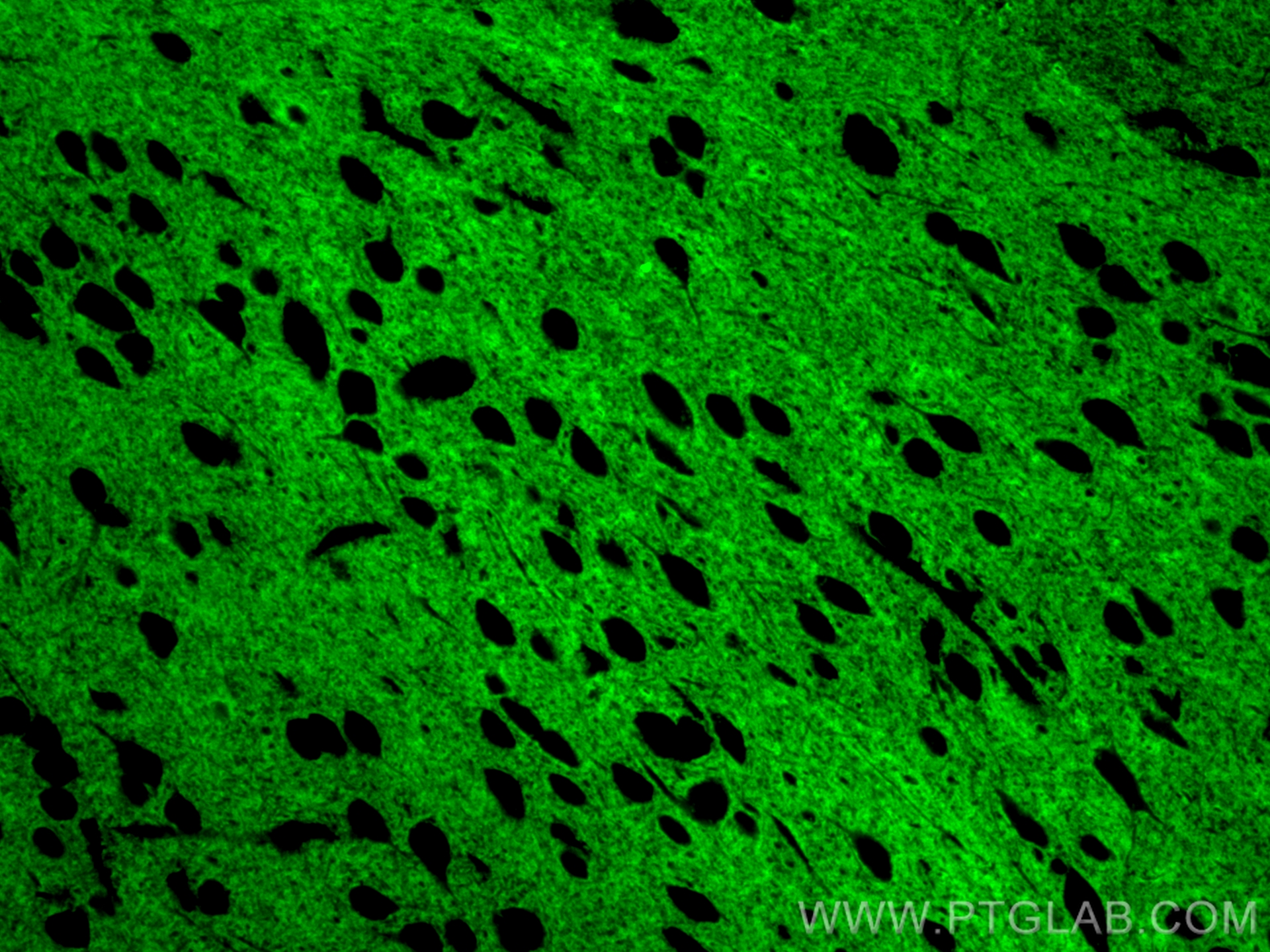验证数据展示
经过测试的应用
| Positive IF-P detected in | mouse brain tissue |
推荐稀释比
| 应用 | 推荐稀释比 |
|---|---|
| Immunofluorescence (IF)-P | IF-P : 1:50-1:500 |
| It is recommended that this reagent should be titrated in each testing system to obtain optimal results. | |
| Sample-dependent, Check data in validation data gallery. | |
产品信息
CL488-83298 targets Syntaxin 1B in IF-P applications and shows reactivity with human, mouse samples.
| 经测试应用 | IF-P Application Description |
| 经测试反应性 | human, mouse |
| 免疫原 |
CatNo: Ag10275 Product name: Recombinant human STX1B protein Source: e coli.-derived, PGEX-4T Tag: GST Domain: 1-263 aa of BC062298 Sequence: MKDRTQELRSAKDSDDEEEVVHVDRDHFMDEFFEQVEEIRGCIEKLSEDVEQVKKQHSAILAAPNPDEKTKQELEDLTADIKKTANKVRSKLKAIEQSIEQEEGLNRSSADLRIRKTQHSTLSRKFVEVMTEYNATQSKYRDRCKDRIQRQLEITGRTTTNEELEDMLESGKLAIFTDDIKMDSQMTKQALNEIETRHNEIIKLETSIRELHDMFVDMAMLVESQGEMIDRIEYNVEHSVDYVERAVSDTKKAVKYQSKARRK 种属同源性预测 |
| 宿主/亚型 | Rabbit / IgG |
| 抗体类别 | Recombinant |
| 产品类型 | Antibody |
| 全称 | syntaxin 1B |
| 别名 | Syntaxin 1B, STX1B, Syntaxin 1A, 240156B9, STX1B1 |
| 计算分子量 | 288 aa, 33 kDa |
| 观测分子量 | 33-35 kDa |
| GenBank蛋白编号 | BC062298 |
| 基因名称 | STX1B |
| Gene ID (NCBI) | 112755 |
| 偶联类型 | CoraLite® Plus 488 Fluorescent Dye |
| 最大激发/发射波长 | 493 nm / 522 nm |
| 形式 | Liquid |
| 纯化方式 | Protein A purification |
| UNIPROT ID | P61266 |
| 储存缓冲液 | PBS with 50% glycerol, 0.05% Proclin300, 0.5% BSA, pH 7.3. |
| 储存条件 | Store at -20°C. Avoid exposure to light. Stable for one year after shipment. Aliquoting is unnecessary for -20oC storage. |
背景介绍
Syntaxins are a family of transmembrane proteins that belong to the SNARE complex (PMID: 11737951). In conjunction with other SNAREs and with the cytoplasmic NSF and SNAP proteins, syntaxins mediate vesicle fusion in diverse vesicular transport processes along the exocytic and the endocytic pathway (PMID: 11737951). Syntaxin 1A and 1B, two closely related isoforms of syntaxin 1, are involved in synaptic vesicle docking and fusion during neurotransmitter release (PMID: 7690687; 1321498; 18691641).
实验方案
| Product Specific Protocols | |
|---|---|
| IF protocol for CL Plus 488 Syntaxin 1B antibody CL488-83298 | Download protocol |
| Standard Protocols | |
|---|---|
| Click here to view our Standard Protocols |


